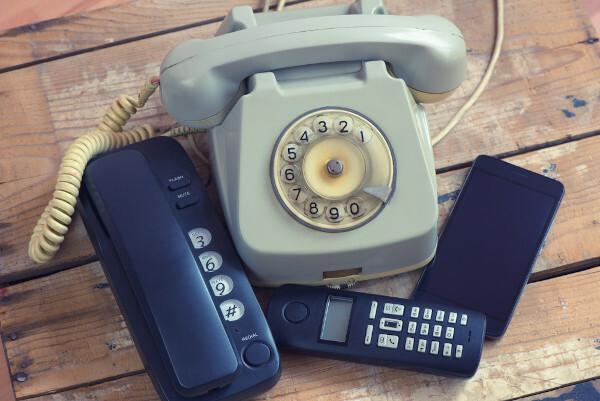Media are all instruments used for the transmission of information and ideas, in addition to promoting the connection between people or groups of people. They can be individual, when communication is established between one individual and another or a group. restricted, or mass, when information is propagated to a large number of people at the same time. time.
From the invention of writing to the emergence of iinternet, the media have undergone profound transformations and adaptations. Among the most used today are the television, computer and cell phones.
Check it out on our podcast: Internet, social networks and contemporary conflicts
Summary on media
The media are instruments used for the transmission of information.
They can be individual, when communication takes place at an interpersonal level, or mass, when a large number of people are reached at the same time.
They are further classified as written, sound, audiovisual, multimedia or hypermedia.
Newspapers, television, telephone, computer, cell phone and internet are the main means of communication today.
Types of media
The media can be categorized into two different types according to the platform through which information is disseminated, and also its recipient audience. Are they:
Individual means of communication: are those tools that allow the exchange of information at an interpersonal level and in a direct way, from one individual to another or among a small group of people. The sender and receiver audience of the message is therefore limited. The main examples are: letter, telephone, cell phone (through instant messaging applications) and e-mail.
Mass or social media: are those tools used to establish communication and the exchange of information with a vast number of people, even entire populations. The main examples are: radio, television, newspaper, magazine and internet.
Do not stop now... There's more after the ad ;)
Classification of the media
The classification of the means of communication also happens according to the type of language used.
Writings: are the means in which information is transmitted via written language. In many cases, as in books, newspapers and magazines, they are said to be printed media or printed media, produced in printers and disseminated on a large scale. They can be individual, like letters, or mass communication.
Sounds: are the means by which information is transmitted via sound waves. The main examples of this category of means of communication are the telephone and the radio. In the last decade, it has also become popular podcast, made available with the help of the internet and accessed through specialized applications and websites.
Audiovisuals: are the means in which information is transmitted in a mixed way, both through images broadcast on a screen and through audio, which occurs simultaneously. Examples are cinema and television.
Multimedia: are the means in which the transmission of information takes place through different forms at the same time, that is, through static and dynamic images, texts and audios. Examples are DVD and CD-ROM.
-
Hypermedia: hypermedia means of communication are similar to multimedia in the sense of bringing together different languages in the same environment, which in this case is computerized. However, its innovation lies in the presence of the hypertext, which allows the user to make their own selection of content they want to access at the moment.
The path that leads to these contents are the so-called links or hyperlinks, which direct the individual to the desired document, folder, text, video, photo, audio, which can happen online (with internet access) or not. Examples of these media are computers and smartphones.
Read more: Communication elements — make up the structure that allows us to create and understand messages
What are the main means of communication?
The means of communication underwent profound transformations and were adapting as the society changed. Some of them became obsolete over time and were replaced by more modern instruments, such as the telegraph, which, little by little, gave way to the telephone. Others, however, although very old, are still used as vehicles for transmitting ideas and exchanging information.
The main means of communication used today are:
writing: it is the main form used for communication, and is defined as a set of symbols and codes used in the transmission of information. It arose millennia before the present era, and has been widely spread by numerous ancient civilizations up to the present.
Mail: consists of sending documents, letters, goods and parcels, in general, from a sender to the recipient and between different locations. Today it is used in several scales, even internationally, being possible to send objects from one country to another. It is a very old means of communication, with records dating back to Persia and the Ancient Egypt.
-
Newspapers and magazines: they are media that started as printed and today are found in physical and digital form. They are widely used for the propagation of news and information relevant to the population or even for a specific audience, especially when it comes to magazines.
The world's first printed newspaper appeared in 1605 in Strasbourg, now part of France. The format, however, is much earlier than that, and appeared in the Roman Empire, around 59 BC. Ç. The first printed magazine dates from 1663 and was a German publication entitled Uplifting Monthly Discussions.
Telephone: arose from the improvement of the telegraph, which until then transmitted only codes. The telephone transmits sound waves over long distances, which has greatly facilitated interpersonal communication all over the world. It emerged in the second half of the 19th century.
Radio: it is a mass communication medium that propagates information through sound. It is contemporary with the telephone, having also appeared in the mid-19th century.
Television: performs the transmission of image and sound in real time (live) or previously recorded. Its invention took place at the beginning of the 20th century, and the first tests and transmissions took place between 1926 and 1928.

Computer: is, with the smartphones, one of the main means of communication used today. It consists of equipment responsible for processing and storing data. The transmission of information occurs in different ways, such as writing, images, audio or videos. Its invention dates back to the 19th century, and the advent of the internet boosted the use of this tool.
cell phone and smartphone: are long-distance means of communication that, initially, propagate information through sound, later added to text. (messages), and today they also store and process data, becoming a multimedia tool with access to Internet.
Internet: Also called the World Wide Web, via the Internet it is possible to transmit information simultaneously and instantly to different parts of the world. It represented a true revolution in communications and in interpersonal and collective relationships, and is currently an essential part of many people's daily lives.
Evolution of the media
THE establishment of communication and the exchange of information have always been necessary since the beginning of the human species.. The records found in caves, which later received the name of rock art, are evidence of the existence of a writing code since Prehistory, which corresponds to the periods Paleolithic and Neolithic.
A system of codes and symbols was later developed by eastern civilizations around 4000 BC. C., who recorded important information from their daily lives on clay surfaces, which became known as cuneiform writing.
THE writing was widely used and perfected by several civilizations until the present, and is today an important form of communication, but not the only one. The invention of printing by Johann Gutemberg in the 15th century stands out as one of the main revolutions in communication, starting with the reproduction of books and culminating in the development of newspapers and magazines, in the 20th century. XVII.
Communication over long distances using wires for the transmission of written signals began to be researched at the end of the 18th century and materialized in 1835 with the invention of the American Samuel Morse, who created the Telegraph, able to send codes using cables and the electricity. This medium spread rapidly during the 19th century, and arrived in Brazil in 1852. He representor the beginning of the connection of spaces and the reduction, albeit subtle, of distances, making room for the technical revolutions that would follow.
In the mid-nineteenth century, around 1860, the emergence of the radio It's from telephone, an instrument that gradually replaced the telegraph. The second invention is commonly associated with Alexander Graham Bell, but in the early 2000s, the The United States Congress recognized the Italian Antonio Santi Giuseppe Meucci as the inventor of the telephone.
The radios were spread mainly in the first half of the 20th century, being an instrument of mass communication widely used during the First World War. In Brazil, the first transmission took place in 1922.

the advent of television, which had its first demonstration in 1927, but whose development process began decades earlier, revolutionized mass communication and people's way of life. Although new instruments have emerged over time, TV modernized and followed the transformations and demands of society, and continues to be part of everyday life.
The modernization of the means of communication accelerated, from the second half of the 20th century, with the improvement of techniques, on the one hand, and the emergence of new demands by society, on the other. Interpersonal and mass communication thus underwent a rapid transformation with the emergence of the first cell phones and the internet, which made it possible to interconnection with different parts of the world at the same time through the instantaneous sharing of information, thus marking an important phase in the realization of the phenomenon of globalization.
currently 59.5% of the world population isto the connectedyou à iinternet, most of them through the smartphones (92,6%). It is noted, however, that traditional means have not disappeared, but have been re-signified in order to adapt to new times.
By Paloma Guitarrara
Geography teacher


